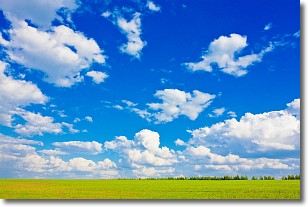Weather Alert in Illinois
Flood Warning issued April 3 at 1:48PM CDT by NWS Paducah KY
AREAS AFFECTED: Alexander, IL; Pulaski, IL; Ballard, KY; Carlisle, KY; Fulton, KY; Hickman, KY; Mississippi, MO
DESCRIPTION: ...The National Weather Service in Paducah KY has issued a Flood Warning for the following rivers in Kentucky...Illinois...Missouri... Ohio River at Olmsted Lock and Dam affecting Ballard and Pulaski Counties. Ohio River at Cairo affecting Hickman, Ballard, Alexander, Pulaski, Mississippi, Carlisle and Fulton Counties. Ohio River at Paducah affecting Pope, McCracken, Livingston and Massac Counties. Ohio River at Smithland Dam affecting Pope and Livingston Counties. .A multi-day heavy rain is headed toward the region lasting through Saturday. Three days of rainfall is incorporated into the forecast but it still does not include the entire event. The Ohio River has started to rise and increases in crest forecasts can be expected. Now is the time to prepare for flooding. * WHAT...Moderate flooding is forecast. * WHERE...Ohio River at Cairo. * WHEN...From Saturday afternoon until further notice. * IMPACTS...At 50.0 feet, The first gate is closed at Cairo. * ADDITIONAL DETAILS... - At 1:00 PM CDT Thursday the stage was 30.7 feet. - Forecast...The river is expected to rise above flood stage Saturday afternoon and continue rising to a crest of 51.0 feet Friday, April 11. - Flood stage is 40.0 feet.
INSTRUCTION: Turn around, don't drown when encountering flooded roads. Most flood deaths occur in vehicles. Motorists should not attempt to drive around barricades or drive cars through flooded areas. Caution is urged when walking near riverbanks. Be especially cautious at night when it is harder to recognize the dangers of flooding. Additional information is available at www.weather.gov.
Want more detail? Get the Complete 7 Day and Night Detailed Forecast!
Current U.S. National Radar--Current
The Current National Weather Radar is shown below with a UTC Time (subtract 5 hours from UTC to get Eastern Time).

National Weather Forecast--Current
The Current National Weather Forecast and National Weather Map are shown below.

National Weather Forecast for Tomorrow
Tomorrow National Weather Forecast and Tomorrow National Weather Map are show below.

North America Water Vapor (Moisture)
This map shows recent moisture content over North America. Bright and colored areas show high moisture (ie, clouds); brown indicates very little moisture present; black indicates no moisture.

Weather Topic: What are Contrails?
Home - Education - Cloud Types - Contrails
 Next Topic: Cumulonimbus Clouds
Next Topic: Cumulonimbus Clouds
A contrail is an artificial cloud, created by the passing of an
aircraft.
Contrails form because water vapor in the exhaust of aircraft engines is suspended
in the air under certain temperatures and humidity conditions. These contrails
are called exhaust contrails.
Another type of contrail can form due to a temporary reduction in air pressure
moving over the plane's surface, causing condensation.
These are called aerodynamic contrails.
When you can see your breath on a cold day, it is also because of condensation.
The reason contrails last longer than the condensation from your breath is
because the water in contrails freezes into ice particles.
Next Topic: Cumulonimbus Clouds
Weather Topic: What are Cumulus Clouds?
Home - Education - Cloud Types - Cumulus Clouds
 Next Topic: Drizzle
Next Topic: Drizzle
Cumulus clouds are fluffy and textured with rounded tops, and
may have flat bottoms. The border of a cumulus cloud
is clearly defined, and can have the appearance of cotton or cauliflower.
Cumulus clouds form at low altitudes (rarely above 2 km) but can grow very tall,
becoming cumulus congestus and possibly the even taller cumulonimbus clouds.
When cumulus clouds become taller, they have a greater chance of producing precipitation.
Next Topic: Drizzle
Current conditions powered by WeatherAPI.com




